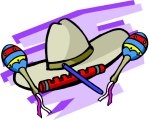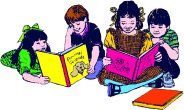
Worksheets and No Prep Teaching Resources
Reading Comprehension Worksheets
Hispanic Heritage

Hispanic Heritage
 Worksheets and No Prep Teaching Resources Reading Comprehension Worksheets Hispanic Heritage |
 Hispanic Heritage |
| edHelper's suggested reading level: | grades 4 to 6 | |
| Flesch-Kincaid grade level: | 5.11 |
| Print Children's Day (font options, pick words for additional puzzles, and more) |
| Quickly print reading comprehension |
| Print a proofreading activity |
|
Children's Day
By Jane Runyon |

|
 1 It all started in 1925. A meeting was held in Geneva, Switzerland. It was called the World Conference for the Well-Being of Children. It was decided at that conference that a day should be set aside each year to celebrate children. The people at this meeting wanted the people of the world to stop and think about the children of the world. It was their hope that by taking the time to think about the children, they would take better care of their children. After all, children are a country's hope for the future.
1 It all started in 1925. A meeting was held in Geneva, Switzerland. It was called the World Conference for the Well-Being of Children. It was decided at that conference that a day should be set aside each year to celebrate children. The people at this meeting wanted the people of the world to stop and think about the children of the world. It was their hope that by taking the time to think about the children, they would take better care of their children. After all, children are a country's hope for the future.| Bate, bate, chocolate, Tu nariz de cacahuate. Uno, dos, tres, CHO! Uno, dos, tres, CO! Uno, dos, tres, LA! Uno, dos, tres, TE! Chocolate, chocolate! Bate, bate, chocolate! Bate, bate, bate, bate, Bate, bate, CHOCOLATE! | Stir, stir, chocolate, Your nose is a peanut. One, two, three, CHO! One, two, three, CO! One, two, three, LA! One, two, three, TE! Chocolate, chocolate! Stir, stir, chocolate! Stir, stir, stir, stir, Stir, stir, CHOCOLATE! |
 |
Create Weekly Reading Books
Prepare for an entire week at once! |
| Leave your feedback on Children's Day (use this link if you found an error in the story) |
 |
Hispanic Heritage
|
 |
United States
|
|
|
 | Fifty States Theme Unit |
 |
Document Based Activities |